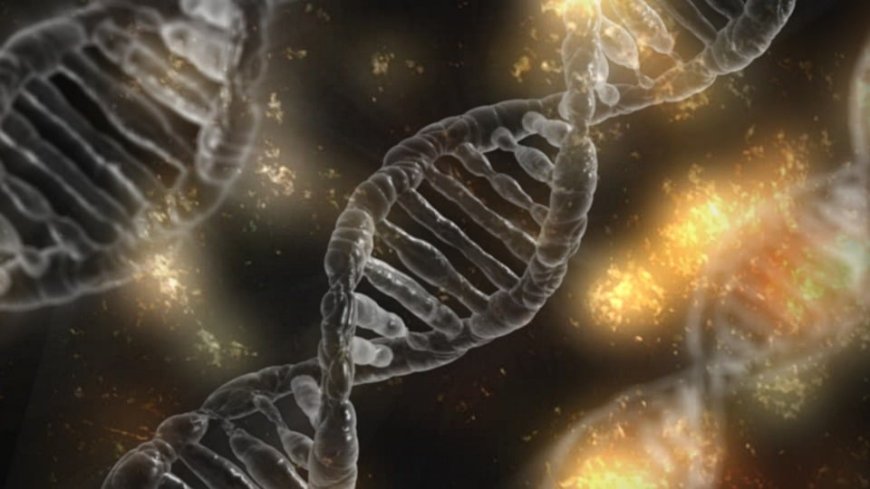Exploring Genetic Links in Dental Caries: SNPs and Their Impact
Discover how genetic factors play a significant role in dental caries, affecting billions worldwide. This review delves into the genetic pathways influencing enamel structure, taste perception, salivary function, and immune response.

Dental caries remains a significant global public health burden, affecting billions worldwide despite preventive measures. While behavioral and socioeconomic factors are primary drivers, individual susceptibility varies markedly among those with similar risk profiles. This review synthesizes evidence establishing a substantial genetic component in caries etiology, mediated through polygenic mechanisms and epistatic interactions across key biological pathways.
Genetic Pathways and Key Findings
1. Tooth Mineralization Genes:
Key Genes: AMBN, AMELX, ENAM, MMPs (e.g., MMP2, MMP20), KLK4, TFIP11, BMP7, *DLX3/DLX4*.
Mechanism: Variants alter enamel/dentin structure and mineralization, increasing susceptibility to acid demineralization. Epistatic interactions (e.g., *TUFT1-MMP2-TFIP11*, *MMP2-BMP7*) significantly influence lifelong caries trajectories, often undetected by single-SNP analyses. Meta-analyses confirm associations (e.g., AMELX OR=1.78, TFIP11 OR=1.64).
2. Taste Perception Genes:
Key Genes: TAS2R38 (bitter), TAS1R2, TAS1R3 (sweet).
Mechanism: SNPs (e.g., TAS2R38 rs713598) alter taste sensitivity, influencing sugar preference and intake. The CG genotype of rs713598 is protective (OR=0.35). TAS1R3 rs307355 shows dose-dependent caries risk across life stages, with epistasis between *TAS1R2/TAS1R3*. GWAS consistently implicate TAS2R genes.
3. Salivary Genes:
Key Genes: CA6, AQP5, MUC5B.
Mechanism: Variants impact saliva flow, buffering capacity (CA6), and antimicrobial properties (MUC5B). CA6 rs17032907-TT increases risk 3.23-fold; AQP5 variants are protective (OR=0.75). Reduced MUC5B facilitates S. mutans adhesion. GWAS link CA12 (salivary buffering) to caries.
4. Immune Response Genes:
Key Genes: MBL2, LTF, DEFB1.
Mechanism: Polymorphisms impair innate immunity (e.g., MBL2 rs11003125-CG/GG), reducing antimicrobial action against cariogenic biofilms. Pooled MBL2 SNPs increase risk (homozygote OR=2.12; heterozygote OR=2.22).
Genome-Wide vs. Candidate Gene Studies
GWAS identified novel loci (AJAP1, ADAMTS3, ISL1, BCOR) beyond traditional pathways, implicating odontogenesis, neural function, and immune regulation. Taste (TAS2R) and mineralization (*DLX3/DLX4*) pathways were validated.
Critical Methodological Challenges
Population Stratification: Inadequate control for genetic ancestry confounds associations. Self-reported race is insufficient; genomic control (e.g., PCA) is essential. Hardy-Weinberg Equilibrium (HWE): Deviations may indicate genotyping errors or bias; pre-analysis HWE checks are crucial. Linkage Disequilibrium (LD): Failure to account for LD biases epistasis and association results. Multiple Testing: Bonferroni corrections are fundamental but rarely applied, inflating false positives (e.g., only 17% of candidate studies corrected adequately). Epistasis: Single-SNP analyses overlook complex interactions; advanced models (e.g., polygenic risk scores) are needed.
Conclusions and Future Directions
Dental caries is a polygenic trait shaped by interactions across enamel integrity, taste preference, salivary function, and immunity. Future studies must:
- Employ larger, diverse cohorts with standardized phenotyping.
- Integrate epistasis, gene-environment interactions, and polygenic risk scores.
- Rigorously address ancestry, LD, HWE, and multiple testing.
- Prioritize translational applications, such as genetic panels for high-risk identification and personalized prevention.
According to the source: Mirage News.
What's Your Reaction?
 Like
0
Like
0
 Dislike
0
Dislike
0
 Love
0
Love
0
 Funny
0
Funny
0
 Angry
0
Angry
0
 Sad
0
Sad
0
 Wow
0
Wow
0
























































































































































































